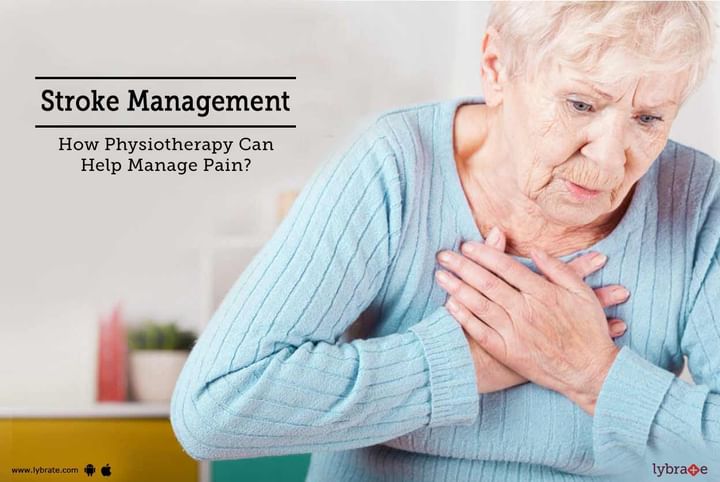Get the App
For Doctors
Login/Sign-up
Last Updated: Jun 04, 2020
BookMark
Report
Stroke Management - How Physiotherapy Can Help Manage Pain?
Dr. Amin A. KhanPhysiotherapist • 16 Years Exp.MDT(Mc Kenzie) , P.G-Dietitian, N.D.T-( Neuro Development Technic ), Physiotherapist
Stroke survivors often suffer from medical complications such as chronic pain. Medical literature estimates that an average of 30-40 percent patients suffer from chronic pain after 4-6 months of the stroke, while an estimated 10-20 percent of patients suffer chronic pain after 12-16 months of the stroke. Shoulder pain is believed to affect almost 72 percent of post-stroke survivors. While there could be a lot of reasons for chronic pain, the best course of action is to rightly identify the underlying cause of the pain and get treated for the same.
Understanding the different type of pains post stroke surgery.
- Central post-stroke pain: Central post-stroke pain or CPSP was once believed to be triggered by thalamic injury. The perception has now changed in the medical community. It is now believed that CPSP is the result of a lesion in the pathway of spino-thalamo-cortex. An approximate 8 percent of stroke patients get affected by this type of pain. The pain is often intense in nature and can affect an entire side of the body with a burning sensation.
- Complex regional pain syndrome: Complex regional pain syndrome or CRPS is a kind of pain that is neuropathic in nature. It is estimated that an average of 12-30 percent of all stroke patient experience this pain within 1-5 months of the stroke. Limited range of motion, spasticity is believed to be the cause of CRPS. In terms of pain intensity, CRPS can be divided into 3 phases:
- Stage 1 of the pain can last for 1-6 months with possible implications of hypersensitivity, edema, intense pain and hyperhidrosis.
- Stage 2 of the pain is characterized by a decreased flow of blood into the limb.
- Stage 3 is the last stage where a patient can witness a loss of function. The treatment can be frustrating as it requires a multi-dimensional approach. Anticonvulsants and gabapentin are frequently prescribed by doctors to deal with this pain.
- Hemiplegic shoulder pain: This is the pain that can crop up due to the biochemical changes in the upper extremity of the body. Causes of shoulder pain post-stroke include adhesive capsulitis, rotator cuff injury, glen humeral subluxation, etc. While exercise proves to be most effective to treat this condition, for stroke patients it becomes a liability. Electrical stimulation has shown promise of treating this condition.
- Femur fracture: A stroke survivor has an increased risk of suffering from femur fracture due to the significant decrease in bone mass. Since the bone mass decreases, the weight-bearing capacity of the limbs decreases, thereby increasing the chance of a fall. Femur fracture can lead to intense pain, weakness, tenderness, shortening of the limb, etc. It requires routine fracture and pain management medication along with supporting bandages to recover from this condition.



+1.svg)
